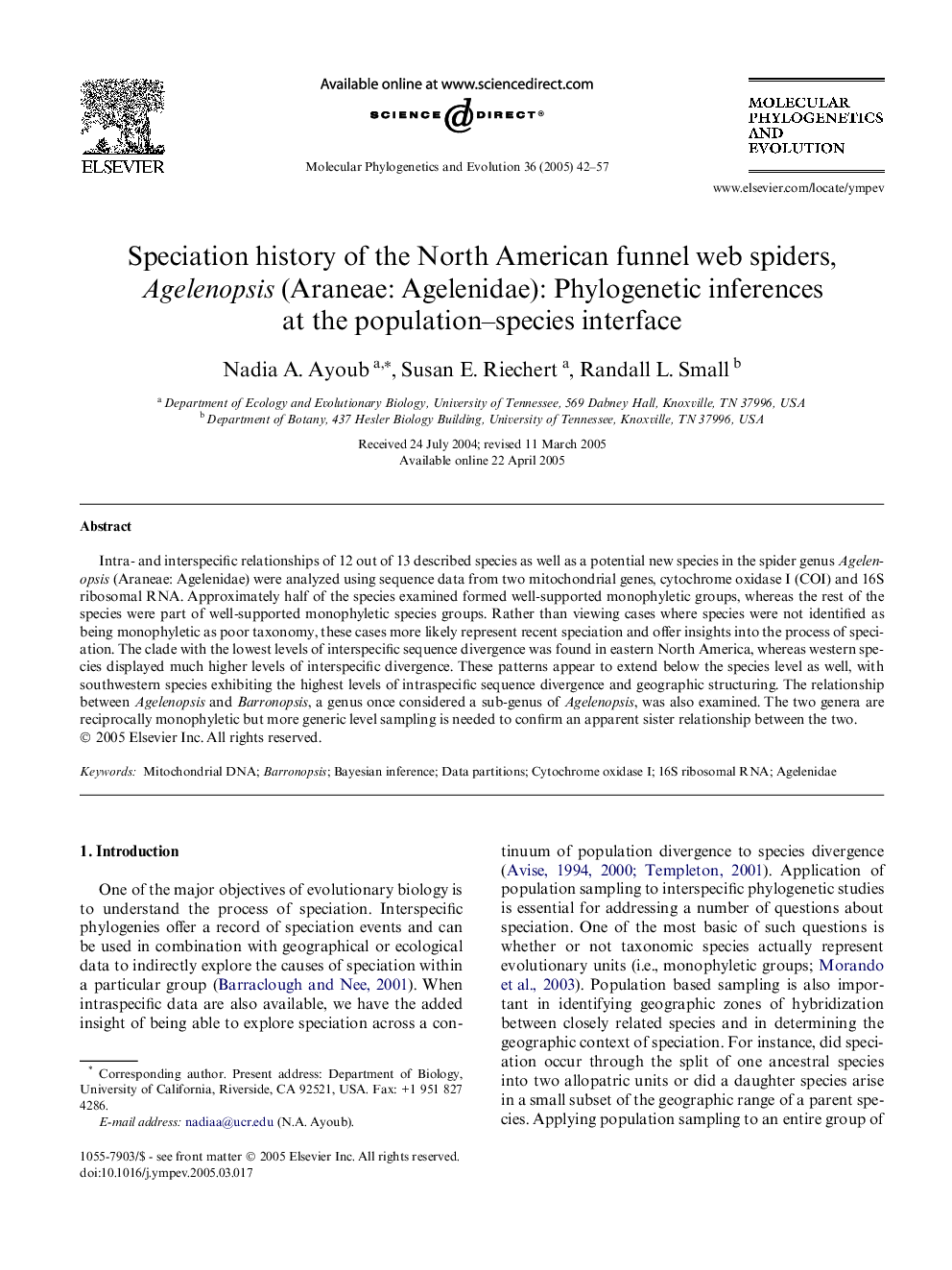| Article ID | Journal | Published Year | Pages | File Type |
|---|---|---|---|---|
| 9143184 | Molecular Phylogenetics and Evolution | 2005 | 16 Pages |
Abstract
Intra- and interspecific relationships of 12 out of 13 described species as well as a potential new species in the spider genus Agelenopsis (Araneae: Agelenidae) were analyzed using sequence data from two mitochondrial genes, cytochrome oxidase I (COI) and 16S ribosomal RNA. Approximately half of the species examined formed well-supported monophyletic groups, whereas the rest of the species were part of well-supported monophyletic species groups. Rather than viewing cases where species were not identified as being monophyletic as poor taxonomy, these cases more likely represent recent speciation and offer insights into the process of speciation. The clade with the lowest levels of interspecific sequence divergence was found in eastern North America, whereas western species displayed much higher levels of interspecific divergence. These patterns appear to extend below the species level as well, with southwestern species exhibiting the highest levels of intraspecific sequence divergence and geographic structuring. The relationship between Agelenopsis and Barronopsis, a genus once considered a sub-genus of Agelenopsis, was also examined. The two genera are reciprocally monophyletic but more generic level sampling is needed to confirm an apparent sister relationship between the two.
Keywords
Related Topics
Life Sciences
Agricultural and Biological Sciences
Ecology, Evolution, Behavior and Systematics
Authors
Nadia A. Ayoub, Susan E. Riechert, Randall L. Small,
